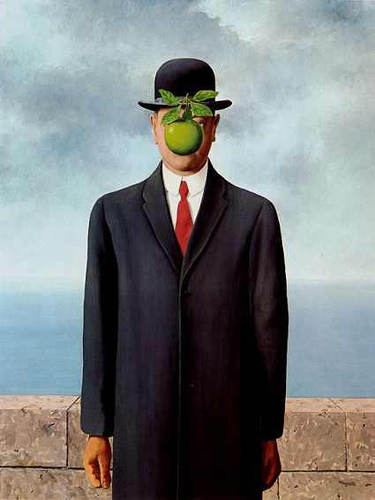 Once viewing the Ubu Imperator by Max Ernst in 1923, the relatively small 100cm x 81cm canvas strikes the viewer with the wonderment of its true meaning. In the center of the art piece is a tower-like figure with it hands up in the air. What's fascinating about the tower is that it is leaning yet, the point-like foundation is even and still. Ernst could be trying to portray that equality can be a output of inequality. The top of the tower looks leaning as like the Tower of Pisa in Italy which could signify the tower as old and built without planning. The tower also retains resemblance to the “Tower of Babel,” a city mentioned in Chapter 11 of the Book of Genesis. The Tower of Babel built back in the Babylonian era was the first city to be built after the “Great Flood”.
Once viewing the Ubu Imperator by Max Ernst in 1923, the relatively small 100cm x 81cm canvas strikes the viewer with the wonderment of its true meaning. In the center of the art piece is a tower-like figure with it hands up in the air. What's fascinating about the tower is that it is leaning yet, the point-like foundation is even and still. Ernst could be trying to portray that equality can be a output of inequality. The top of the tower looks leaning as like the Tower of Pisa in Italy which could signify the tower as old and built without planning. The tower also retains resemblance to the “Tower of Babel,” a city mentioned in Chapter 11 of the Book of Genesis. The Tower of Babel built back in the Babylonian era was the first city to be built after the “Great Flood”. Continuing with the connection of the “Tower of Babel” built right after the “Great Flood,” the lower background is filled with what is considered the opposite of a flood, a dry sand dessert. The dessert could give significance to the harsh conditions of life and the barrenness of peoples kindness towards others. Stuck upside-down in the harsh desert is a hook. Although it looks barely planted into the sand, the hook remains straight and forceful against gravity. Two more hooks fade towards a one-point perspective point on the left side of the painting horizon line.
On the tower in the foreground are to hands palm faced towards the towers body. Both resemble in an open prayer like manner, almost imitating the hands depicted upon Jesus Christ in Mid-Evil and also Renaissance artwork. The tower could be be of religious nature as Ernst might be trying to show the great amount of force of the Catholic Church in history. The tower's leaning top may be looking towards the heavens for its creator to save it from the barren and harsh dessert below.
Wrapped around the tower resembling the wrappings of a scarf, is a deal of green fabric. Almost barely hanging off the tower, the scarf could signify nature and its necessity to the world in which we live in. With the scarf almost falling to the harsh sand below, it can signify our ability and our capability to lose contact with nature. In a contrary perspective, the tower could also be guarding the green fabric signifying nature
After analyzing the artwork for some time, the shadow becomes more interesting. In the shadow down on the foot of the artwork is the shadow of the tower before it. However, the shadow does not accurately show the tower it is perceived state. It shows its future. In the shadow it shows the tower being burnt to the ground and eventually decaying away. The Ubu Imperator is a fascinating piece of art by Max Ernst.
Image Cited:

1 comment:
Very deep and meaningful. Great job! It really helped me understand his work better
Post a Comment